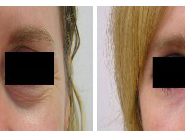Eyelid surgery, also known as blepharoplasty, is a popular cosmetic procedure designed to enhance the appearance of the eyelids. While the fundamental goals of eyelid surgery—such as reducing excess skin, removing fat pads, and improving eyelid function—are consistent across different ethnicities, the techniques and considerations can vary based on individual anatomical and cultural differences. This is particularly true for Asian patients, who may have distinct eyelid structures and aesthetic preferences. This article delves into the specialized techniques and considerations for Eye lid surgery clinic in muscat .
Understanding Asian Eyelid Anatomy
Asian eyelid anatomy is often characterized by specific features that differentiate it from other ethnic groups. One notable feature is the presence of an epicanthic fold, a fold of skin that extends from the upper eyelid to the inner corner of the eye. This fold can create the appearance of a “monolid” or a single eyelid without a distinct crease. The upper eyelid may also be less prominent compared to other ethnicities, with a generally more rounded shape.
In addition to the epicanthic fold, Asian eyelids can have a varying degree of orbital fat and different skin elasticity. These anatomical features influence both the surgical approach and the desired outcomes.
Specialized Techniques in Asian Eyelid Surgery
- Double Eyelid Surgery (Blepharoplasty with Crease Formation)
One of the most common procedures for Asian patients is double eyelid surgery, which aims to create or enhance a visible eyelid crease. This procedure is particularly sought after by individuals who desire a more defined upper eyelid appearance. Surgeons use various techniques to achieve this, including:
- Incisional Method: This technique involves making an incision along the planned crease line to remove excess skin and fat. It allows for precise control over the crease formation and is suitable for patients with significant excess skin or fat. The incision is closed with sutures, leaving a natural-looking crease once healed.
- Non-Incisional (Suture) Method: In this technique, a series of small sutures are placed through the upper eyelid to create a fold without removing skin. It is less invasive and is ideal for patients with minimal excess skin and fat. The results can be less permanent than the incisional method, but many patients are satisfied with the outcomes.
- Epicanthoplasty
For patients with prominent epicanthic folds that may obscure the inner corners of the eyes, epicanthoplasty can be performed. This procedure involves modifying or removing the epicanthic fold to create a more open and aesthetically pleasing eye shape. It can be done in conjunction with double eyelid surgery or as a standalone procedure, depending on the patient’s needs.
- Asian Eyelid Surgery with Fat Grafting
Asian eyelid surgery often includes the use of fat grafting techniques to address volume loss in the eyelid area. Fat grafting involves harvesting fat from other parts of the body (such as the abdomen or thighs) and injecting it into the eyelid area to restore volume and improve contour. This technique is particularly beneficial for patients with hollowed or sunken eyes.
- Canthoplasty
Canthoplasty is a surgical technique used to adjust the shape and position of the outer corner of the eye (lateral canthus). This procedure can be used to elongate the eye, create a more almond-shaped appearance, or correct asymmetry. Canthoplasty is often performed in conjunction with other eyelid surgeries to achieve a balanced and harmonious look.
Considerations for Asian Eyelid Surgery
- Cultural Preferences and Aesthetic Goals
Cultural preferences play a significant role in the planning and execution of eyelid surgery for Asian patients. It is essential for surgeons to understand the patient’s aesthetic goals and cultural context to achieve results that align with their expectations. For some, creating a more pronounced eyelid crease is desirable, while others may prefer a subtler enhancement.
- Ethnic Sensitivity and Individualization
Surgeons must approach each case with sensitivity to ethnic characteristics and individual anatomical variations. An understanding of the unique anatomical features of Asian eyelids and an ability to tailor the surgical approach to each patient’s needs are crucial for successful outcomes. Personalized planning helps ensure that the results enhance natural features rather than imposing a generic appearance.
- Recovery and Post-Operative Care
Recovery from eyelid surgery involves managing swelling, bruising, and potential discomfort. For Asian patients, post-operative care may include specific instructions to address any concerns related to skin type and healing patterns. It is essential to follow the surgeon’s recommendations for optimal recovery and to attend follow-up appointments to monitor progress.
- Risks and Complications
As with any surgical procedure, eyelid surgery carries risks and potential complications. For Asian patients, these may include issues related to skin healing, scarring, or asymmetry. Surgeons must discuss these risks with patients and ensure they have realistic expectations. Choosing a board-certified and experienced surgeon specializing in Asian eyelid surgery can help minimize risks and achieve satisfactory results.
Conclusion
Eyelid surgery for Asian patients requires a nuanced understanding of anatomical and cultural factors to achieve the best outcomes. Specialized techniques such as double eyelid surgery, epicanthoplasty, and fat grafting cater to the unique needs of Asian eyelids, while considerations related to cultural preferences, individualization, and post-operative care ensure that the results meet patient expectations. By carefully planning and executing these procedures, surgeons can enhance both the function and appearance of the eyelids, helping patients achieve a refreshed and confident look.


